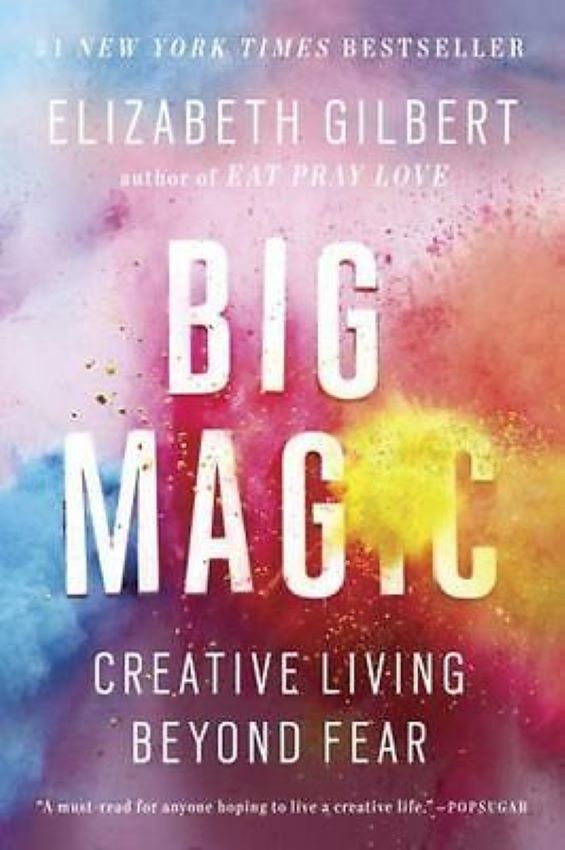
Decoding The High Priestess Tarot Card:
The High Priestess card is assigned to the Hebrew letter Gimel, meaning camel. Spiritually speaking, Gimel refers to how a camel rises when called to serve or perform its duty. Essentially, it alludes to ascending and becoming great.
Camels are known to sit and rest for long periods of time, but are quick to respond to the challenge when called upon. They rise up from the ground and stand tall, carrying the weight on their backs, and taking on the responsibility. Camels also transport travelers to their adventures, delivering them into unknown lands.
The High Priestess Card shows her sitting in the Holy of Holies at King Solomon’s Temple. Holy of Holies, also called Devir, is the most sacred area of the ancient Temple of Jerusalem – a square, windowless enclosure accessible only to the Israelite High Priest. Once a year, on Yom Kippur, the Day of Atonement, he was permitted to enter the square, burn incense, and anoint the sanctuary with sacrificial animal blood. By this act, the most solemn of the religious year, the high priest atoned for his sins and those of the priesthood. The priest had to be pure in heart before entering the Devir, or he would surely die.
Who may ascend the mountain of the Lord? Who may stand in his holy place? He who has clean hands and a pure heart” – Psalm 24:3-4. Jesus said it is the “pure in heart” who will see God and experience fellowship with Him (Matthew 5:8). Because we have all sinned and fallen short of the glory of God (Romans 3:23), who can approach Him?
-Freedom In Christ
In the Old Testament, everything about the Temple was set up to emphasize the near-unapproachable holiness and power of God. The Day of Atonement was a day of great fear, reverence, and awe. The high priest entered behind the thick veil or curtain separating God from the priests, and only after going through a great deal of ceremonial cleansing. This was done, no doubt, with fear and trepidation, not knowing if he would come out alive. The other priests tied a rope around his ankles to pull him out of God’s presence if it appeared he had expired because nobody else wanted to go in after him.
In the New Testament, there is a radical shift in access to God. The moment Jesus died for our sins on the cross:
The curtain of the temple was torn in two from top to bottom – Mark 15:38. The relationship between God and humankind had been restored. As the writer of Hebrews says, We have confidence to enter the most holy place by the blood of Jesus, by a new and living way opened for us through the curtain, that is, his body and since we have a great priest over the house of God, let us draw near to God with a sincere heart in full assurance of faith, having our hearts sprinkled to cleanse us from a guilty conscience and having our bodies washed with pure water -Hebrews 10:19-20.
-Freedom In Christ
The High Priestess can be compared to the Cohen High Priest on the Day of Atonement. Similar to the Cohen, the High Priestess is depicted sitting in the temple holding a Torah scroll, thinking of the 613 commandments (or mitzvahs) which are divided into two sets or categories. There are exactly 248 commandments that must be adhered to, and the remaining 365 commandments are prohibited.
The Priestess sits between the two pillars, the white (Jachin) and the black (Boaz), representing mercy and severity, respectively. She sits in the center of these two pillars, finding her (spiritual) center within the five sefirot: Keter, Tiferet, Yesod, and Malchut. The middle pillar on the Kabbalah Tree of Life corresponds to mildness and acts as the filament that balances out the left and right columns (the positive and negative polarities).
The same goes for the individual, who must learn how to maintain balance and control over the two worlds they simultaneously exist in. They will find a middle ground to restrict impulsive behavior, leading them to fully immerse themselves into one of the opposite personality-polarities, and which eventually contributes to consequential repercussions.
Directly behind the Priestess hangs a curtain adorned with ten pomegranates forming the Kabbalah Tree of Life. In ancient times, pomegranates were believed to contain exactly 613 seeds – the number of commandments in the Torah. Healers prescribe pomegranate juice to Alzheimer’s patients, which helps improve memory. As the Priestess sits in deep contemplation and self-reflection, she remembers past transgressions with empathy. She also contemplates how others wronged her in the past. Although she learns to forgive, she will never forget. Instead, the Priestess understands the reasoning of why they did or said those hurtful things. As she comes to terms with these events, she won’t allow herself to be treated like that again. She learns to forgive others, and most importantly, she learns to forgive herself. This act purifies her soul and is symbolized by the white cross over her heart. Once the heart is open, it releases the negativity and opens up the middle column channel, flowing directly up to the crown chakra.
Rabbinic Hebrew calendar days begin and end with the moon from sunset to sunset in the evenings, and the moon symbols on the card portray the fluctuating moon cycles. These are the 365 moons rising throughout the year and correspond to the commandments of the Torah, specifically the 365 prohibited ones. According to In Ancient Times, the moon was called Sin after the Mesopotamian moon god – and Sin (as in Mt. Sinai), the mountain of the moon.
The Priestess repents to purify her soul and is preparing herself to enter the temple on the Day of Atonement when God comes down from heaven and judges the people of their sins. Furthermore, on the Day of Atonement – Yom Kippur, a person is forgiven of all their transgressions from the past year, and every year the restitution of sin resets.
One can see the resemblance the middle pillar shares with the High Priestess tarot card. At the sefirah, Keter the Priestess adorns her Moon crown; Keter, meaning crown, coinciding with the crown chakra. At the sefirah Tiferet, there is a cross over the Priestess’s heart; Tiferet relates to the heart chakra. At the sefirah Yesod, which is ruled by the moon, there is a large crescent waning moon. And lastly, the water at the Priestess’s feet, which pours from her dress and onto the floor, represents the sefirah Malchut.
It is advised to forgive anyone who has caused you pain or harm. Keep in mind forgiveness is not for others. It is for you. Forgiving is not forgetting. It is remembering without anger. It frees up your power, heals your body, mind, and spirit. Forgiveness opens up a pathway to a new place of peace, where you can persist despite what happened to you. It will also create the spiritual channel needed for the life-force energy to ascend the kundalini, directly up the center of the Tree of Life within, where the High Priestess obtains the ‘at oneness’ with the Creator. In this sense, the High Priestess represents the Shekinah, the divine feminine aspect of God, also referred to as the Holy Spirit or the divine presence of God.
In ancient times, when the temple still existed, once a year on the holiest of days, Yom Kippur, the Day of Atonement – the Cohen (High Priest) dressed in white would enter the Holy of Holies (the inner sanctuary of the holy temple), while the people waited outside the temple. The Cohen priest would say the 72 Names of God in a specific formula to bless and sanctify the Jewish people on this holiest of days. In Jewish tradition, there is a secret behind the word Devir (or Dvir) and its correlation with the 72 Names of God that fully define God. It is a formula made of 216 letters, and its origin is Exodus 14:19-21:
19) And the angel of God, which went before the camp of Israel, removed and went behind them; and the pillar of the cloud went from before their face, and stood behind them:
20) And it came between the camp of the Egyptians and the camp of Israel; and it was a cloud and darkness to them, but it gave light by night to these: so that the one came not near the other all the night.
21) And Moses stretched out his hand over the sea; and the LORD caused the sea to go back by a strong east wind all that night, and made the sea dry land, and the waters were divided. Dividing the 216 letters of these sentences (in Hebrew) to thirds will give us 72 three-letter combinations.
It was the only time the priest entered the Holy of Holies, known as the Devir, wherein lay the original Ark of the Covenant. The word Dvir in Hebrew gematria equals 216. While inside the Devir, if his heart were pure, he would live. If his heart were not pure, he would die.
To truly transform their ego-nature, one must find their center. They will reconnect with the soul and learn to speak from the heart. The High Priestess is pictured here holding a Torah scroll, which is considered the (instruction) or ‘book of the law.’ Coincidentally, Aleister Crowley wrote The Book of the Law or Liber AL vel Legis, outlining the principles of Thelema, which corresponds elegantly with the High Priestess card.
Thelema is an esoteric and occult social or spiritual philosophy and religious movement developed in the early 1900s by Aleister Crowley, an English writer, mystic, and ceremonial magician. The word Thelema is the English transliteration of the Greek word meaning will, to will, wish, want, or purpose. The Thelemic pantheon contains numerous deities — primarily a trio adapted from ancient Egyptian religion, the three speakers of The Book of the Law: Nuit, Hadit, and Ra-Hoor-Khuit – and is a collection of gods and goddesses who either literally exist or serve as symbolic archetypes or metaphors.

Three statements, in particular, distill the practice and ethics of Thelema:
• Do what thou wilt shall be the whole of the Law, meaning that adherents of Thelema should seek out and follow their true path, i.e., find or determine their True Will.
• Love is the law, love under will, i.e., the nature of the Law of Thelema is love, but love itself is subsidiary to finding and manifesting one’s authentic purpose or ‘mission.’
• Every man and every woman is a star, which implies by metaphor that persons who do their Will are like stars in the universe: occupying a time and position in space, yet distinctly individual and having an independent nature largely without undue conflict with other stars.
As such, these three Thelemic principles sum up the spiritual concept of the Hebrew letter Gimel assigned to the High Priestess card, and which also, as a consequence, gives mankind the key to their spiritual elevation. Know that everyone is their own unique individual, and we all serve our authentic purpose. Therefore, we must learn to focus within and not try to change others or convince anyone our way is better than theirs. Each of us is charged with uncovering our true purpose and life mission by looking within ourselves and spending time isolated in self-reflection. Once this occurs, we spiritually prepare ourselves to do anything asked of us. We open up our hearts to be filled with the spirit. It is in that moment that we connect to our true path. We will be blessed with a strong sense of certainty – knowing our ‘mission,’ which ignites within us, along with the will to serve and answer our calling. Like the camel (Gimel), we rise up and become great, determined to fulfill our duty.












